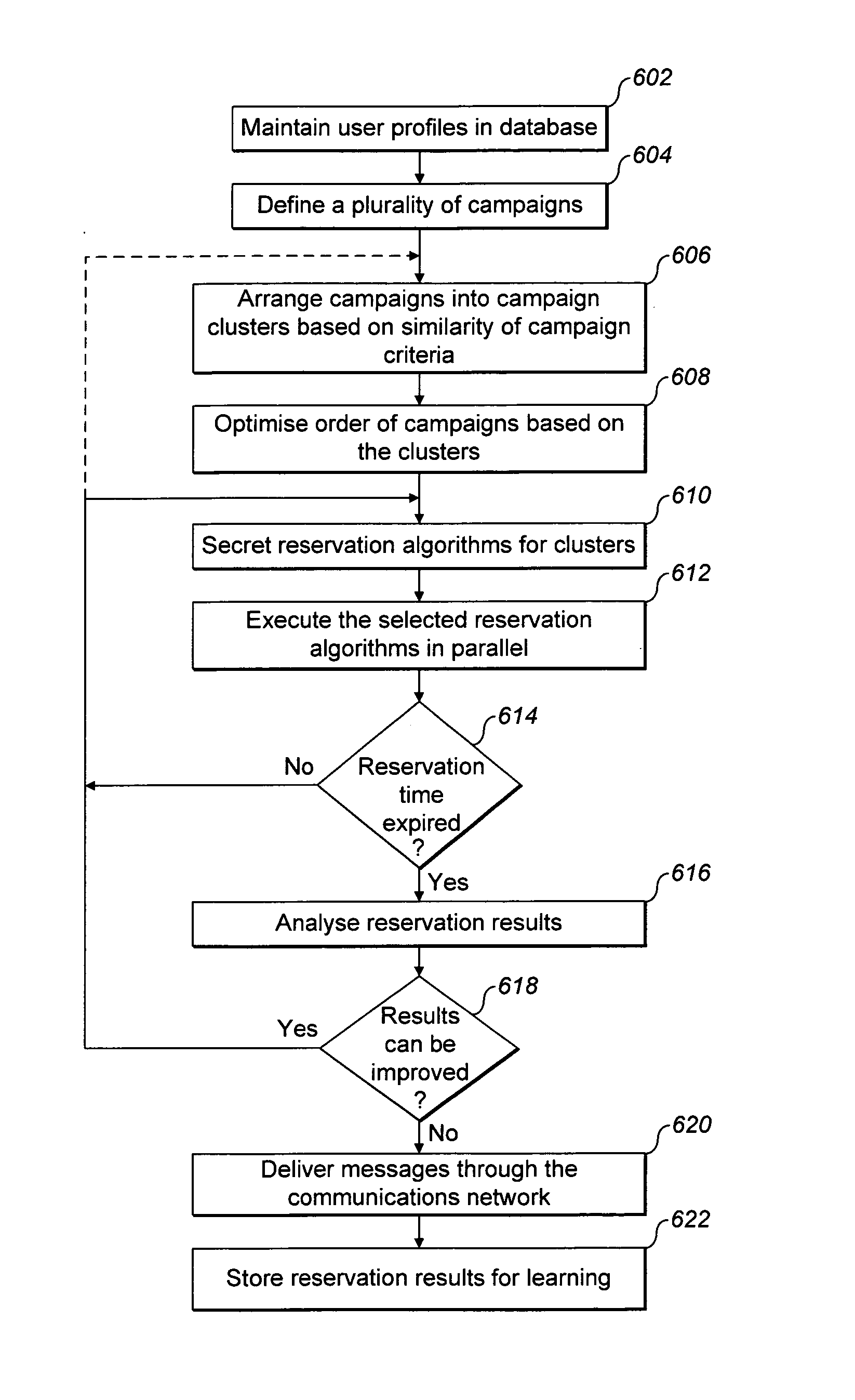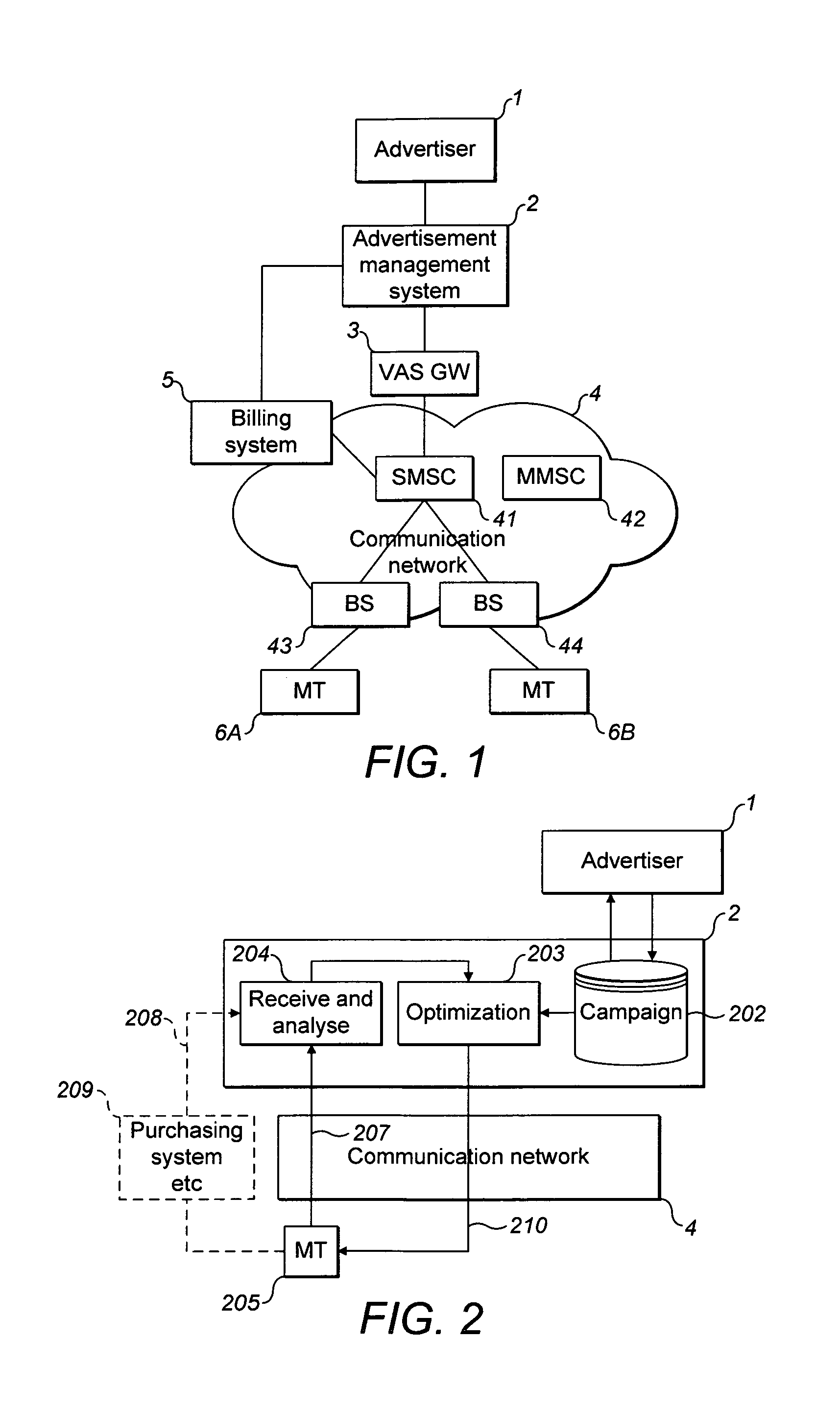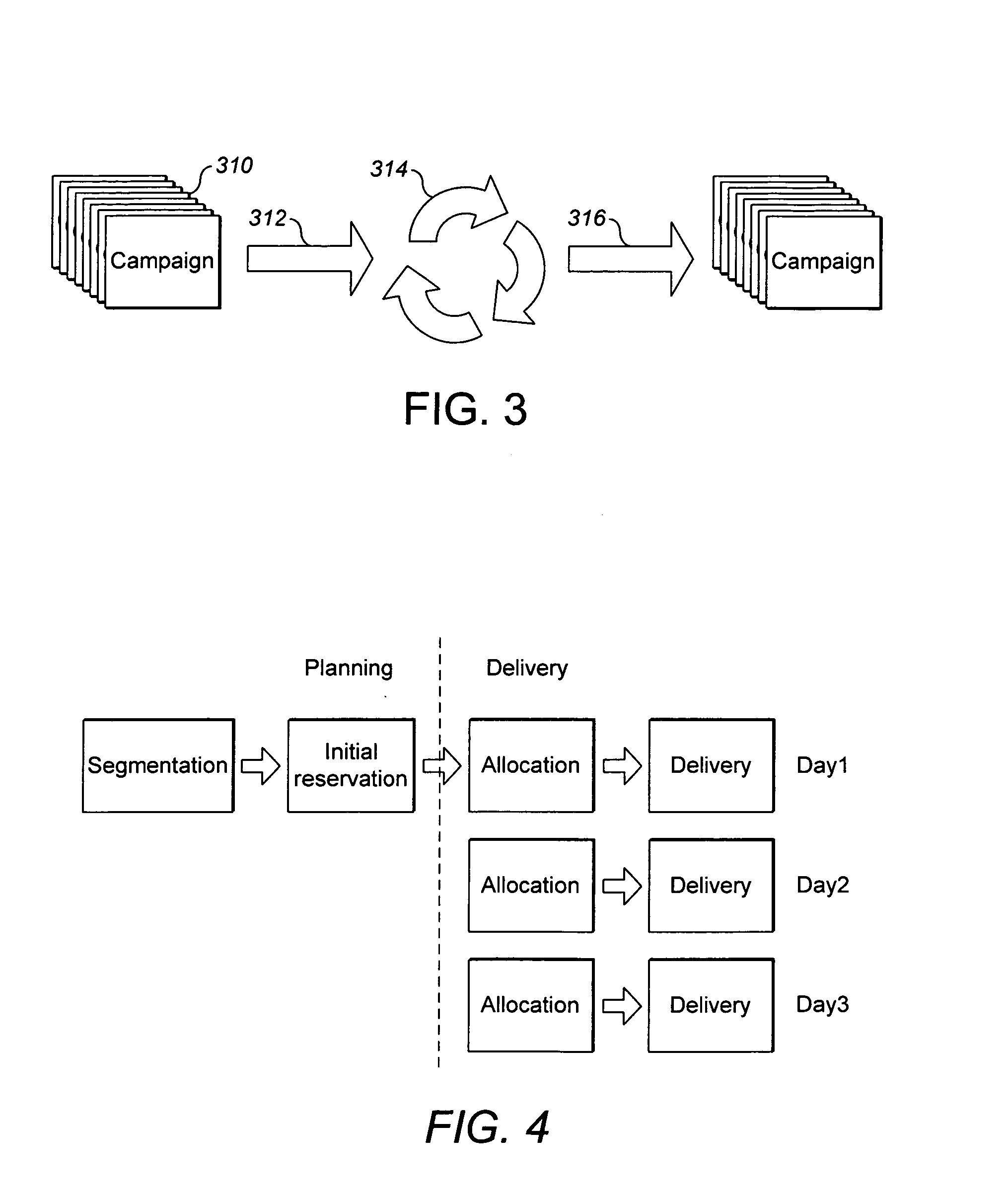Method and a system for delivering messages
a message delivery and message technology, applied in the field of communication systems, can solve the problems of ineffectively reserving advertisement receivers and achieving full utilization, processing is easily too slow for such a large number of advertisement receivers, and the time available for processing, so as to improve the flexibility and efficiency of the method, and allocate resources efficiently.
- Summary
- Abstract
- Description
- Claims
- Application Information
AI Technical Summary
Benefits of technology
Problems solved by technology
Method used
Image
Examples
example 1
[0048]In a first example of selection algorithm there are campaigns C1, C2, and C3 Where
[0049]In campaign C1 it is defined that 2 messages are to be sent to recipients having a profile A.
[0050]In campaign C2 it is defined that 2 messages are to be sent to recipients having a profile B.
[0051]In campaign C3 it is defined that 2 messages are to be sent to recipients having a profile C
[0052]Allocation algorithm 1 is assumed to use a recipient number based allocation and order of campaigns as 1, 2, and 3. Only one message per recipient is allowed. Allocation algorithm 1 gives rise to the following delivery of the campaigns C1, C2, C3. Messages of the campaign C1 are allocated to be sent to the recipients 1 and 2. Messages of the campaign C2 are allocated to be sent to the recipients 3 and 4. No messages of the campaign C3 are allocated to be sent to the recipients, since there are no recipient with a profile C left: a message has already been allocated to be sent to recipient 1 and 3 in ...
PUM
 Login to View More
Login to View More Abstract
Description
Claims
Application Information
 Login to View More
Login to View More - R&D
- Intellectual Property
- Life Sciences
- Materials
- Tech Scout
- Unparalleled Data Quality
- Higher Quality Content
- 60% Fewer Hallucinations
Browse by: Latest US Patents, China's latest patents, Technical Efficacy Thesaurus, Application Domain, Technology Topic, Popular Technical Reports.
© 2025 PatSnap. All rights reserved.Legal|Privacy policy|Modern Slavery Act Transparency Statement|Sitemap|About US| Contact US: help@patsnap.com



